30 January 2025
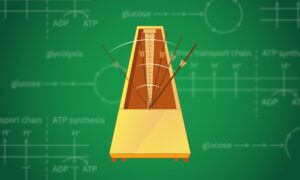
A new study from EMBL Barcelona researchers shows that metabolism is a selective modulator of developmental tempo, contributing to our evolutionary understanding.
SCIENCE & TECHNOLOGY
10 January 2025
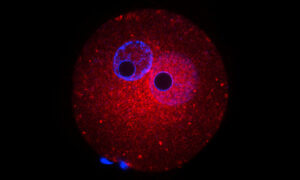
Researchers in the Boulard group at EMBL Rome demonstrated that the catalytic activity of the OGT enzyme is essential for embryonic development, and that when it’s reduced, embryo development is delayed – especially in males.
SCIENCE & TECHNOLOGY
7 January 2025

Maria Costanzo, former predoc at EMBL Barcelona, talks about YAP, her favourite protein in the shape of a heart. This is part of a series of stories about EMBL scientists and quirky, charming proteins that make them smile.
PEOPLE & PERSPECTIVES
18 June 2024
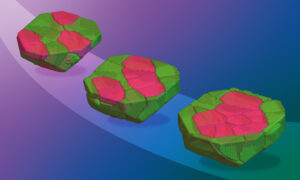
A theoretical model involving tiny Minecraft-like cubes can help us understand dynamic biological processes, such as cell sorting in embryos.
SCIENCE & TECHNOLOGY
1 May 2024
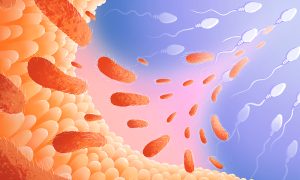
Scientists from EMBL Rome and EMBL Heidelberg found that disrupting the gut microbiome of male mice increases the risk of disease in their offspring. Their findings suggest that a father’s pre-conception environment can have lifelong effects on offspring.
SCIENCE & TECHNOLOGY
11 March 2024

New research from EMBL Heidelberg shows how cells in developing embryos undergo a major shift in the way they regulate gene expression as they mature and differentiate.
SCIENCE & TECHNOLOGY
2024
sciencescience-technology
15 November 2023

EMBL developmental biologists – with help from other disciplines – pursue the significance of time, timing, and transitions in organisms during their development
EMBLetc
20 June 2023
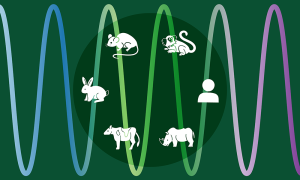
Researchers from the Ebisuya Group at EMBL Barcelona have used an unprecedented stem cell zoo to compare six different mammalian species and their developmental time.
SCIENCE & TECHNOLOGY
2023
sciencescience-technology
4 August 2022
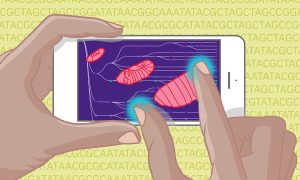
EMBL and UW researchers plus additional collaborators have constructed a complete map of fruit fly embryonic development using machine learning. This research is foundational to better understanding overall embryo development in other species, including humans.
SCIENCE & TECHNOLOGY
2022
sciencescience-technology
28 April 2022
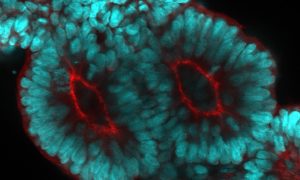
Scientists at EMBL Barcelona have created for the first time a 3D in vitro model that recapitulates the periodic formation of human somites – structures that give rise to the spinal column.
SCIENCE & TECHNOLOGY
2022
sciencescience-technology
8 April 2022

Recent studies from the Hackett group at EMBL Rome have revealed new insights on the mechanism regulating transmission of non-genetic information during embryonic development, and inspired a scientific illustration
SCIENCE & TECHNOLOGY
2022
sciencescience-technology
4 March 2022

A recent study by EMBL researchers proposes a new method to grow early embryos in the laboratory. With a 3D culture set-up, scientists can closely monitor the changes embryos undergo around the time of implantation.
SCIENCE & TECHNOLOGY
2022
sciencescience-technology
25 February 2022
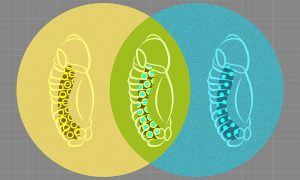
Researchers from the Furlong group at EMBL have come up with a way to observe the development of fruit-fly embryos simultaneously at the genetic and cellular levels, generating a high-resolution and integrated view of how different cell lineages form.
SCIENCE & TECHNOLOGY
2022
sciencescience-technology
23 February 2022

Michael Dorrity, one of EMBL’s newest group leaders, is studying how the environment influences early life stages in zebrafish.
LAB MATTERSPEOPLE & PERSPECTIVES
2022
lab-matterspeople-perspectives
6 September 2021
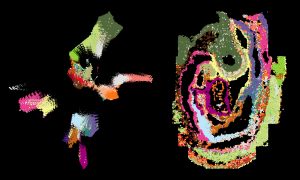
Researchers have combined spatial gene expression information with single-cell genomics data to create a high-resolution atlas of mouse organogenesis.
SCIENCE & TECHNOLOGY
2021
sciencescience-technology
30 March 2021

The new group leader at EMBL Rome will study how embryos can inherit non-genetic information from their parents that causes stable and heritable effects
LAB MATTERSPEOPLE & PERSPECTIVES
2021
lab-matterspeople-perspectives
27 January 2021

New group leader Nicoletta Petridou explains her fascination with the complexity of early embryo development, and how the interdisciplinary nature of EMBL will aid her research.
LAB MATTERSPEOPLE & PERSPECTIVES
2021
lab-matterspeople-perspectives
9 December 2020

Funding by the European Research Council (ERC) will support research on the timing of developmental processes in mammals
EMBL ANNOUNCEMENTSLAB MATTERS
2020
embl-announcementslab-matters
18 September 2020
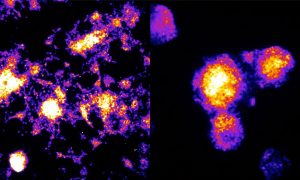
The internal clock that governs the development of embryos ticks slower for humans than for mice. Differences in the speed of biochemical reactions underlie the differences between species in the tempo of development.
SCIENCE & TECHNOLOGY
2020
sciencescience-technology
20 April 2020

Researchers from EMBL Heidelberg have created a complete description of early embryo development, accounting for every single cell in the embryo.
SCIENCE & TECHNOLOGY
2020
sciencescience-technology
9 April 2020
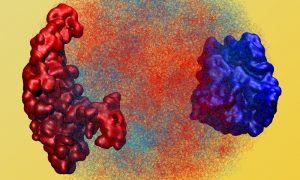
EMBL researchers in the Heard group at EMBL Heidelberg explore the interaction between DNA organisation and gene expression in the early embryo
SCIENCE & TECHNOLOGY
2020
sciencescience-technology
3 April 2020
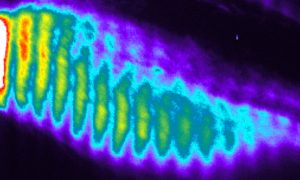
EMBL scientists examine the molecular causes of a rare hereditary disease of the spine and ribs
SCIENCE & TECHNOLOGY
2020
sciencescience-technology
25 February 2020
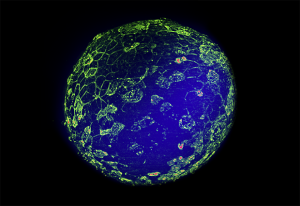
In the Trivedi Group at EMBL Barcelona, Krisztina Arató and Jia Le Lim study the early development of zebrafish embryos.
SCIENCE & TECHNOLOGY
2020
picture-of-the-weekscience-technology
15 November 2018
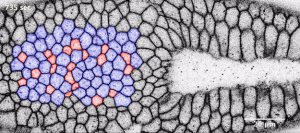
The De Renzis group investigated invagination, the first step of organ development in embryos.
SCIENCE & TECHNOLOGY
2018
sciencescience-technology
28 May 2018
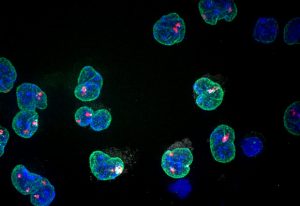
EMBL’s next Director General reflects on the questions that drive her research
PEOPLE & PERSPECTIVES
2018
people-perspectivesscience
20 March 2018
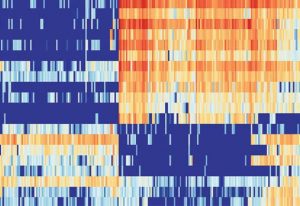
EMBL scientists discover how blood vessel cells become blood stem cells during embryonic development
SCIENCE & TECHNOLOGY
2018
sciencescience-technology
22 February 2018

EMBL scientists show that the rhythm between Wnt and Notch waves enables patterning in embryos.
SCIENCE & TECHNOLOGY
2018
sciencescience-technology
28 February 2013
During embryo development, genes are dynamically, and very precisely, switched on and off to confer different properties to different cells and build a well-proportioned and healthy animal. Fgf8 is one of the key genes in this process, controlling in particular the growth of the limbs and…
SCIENCE & TECHNOLOGY
2013
sciencescience-technology
2 February 2012
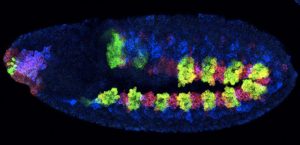
If you wanted to draw your family tree, you could start by searching for people who share your surname. Cells, of course, don’t have surnames, but scientists at the European Molecular Biology Laboratory (EMBL) in Heidelberg, Germany, have found that genetic switches called enhancers, and the…
SCIENCE & TECHNOLOGY
2012
sciencescience-technology
25 June 2009
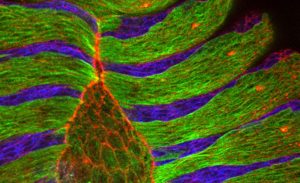
Researchers at the European Molecular Biology Laboratory (EMBL) in Heidelberg, Germany, came a step closer to understanding how cells close gaps not only during embryonic development but also during wound healing. Their study, published this week in the journal Cell, uncovers a fundamental…
SCIENCE & TECHNOLOGY
2009
sciencescience-technology
9 October 2008
Researchers at the European Molecular Biology Laboratory (EMBL) have generated a digital zebrafish embryo – the first complete developmental blueprint of a vertebrate. With a newly developed microscope scientists could for the first time track all cells for the first 24 hours in the life of a…
SCIENCE & TECHNOLOGY
2008
sciencescience-technology
15 September 2007
Many neuronal disorders, including epilepsy, schizophrenia and lissencephaly ─ a form of mental retardation ─ result from abnormal migration of nerve cells during the development of the brain. Researchers from the Mouse Biology Unit of the European Molecular Biology Laboratory (EMBL) in Italy,…
SCIENCE & TECHNOLOGY
2007
sciencescience-technology
25 August 2006
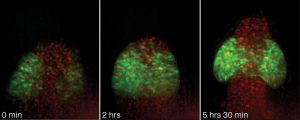
Eyes are among the earliest recognisable structures in an embryo; they start off as bulges on the sides of tube-shaped tissue that will eventually become the brain. Researchers from the European Molecular Biology Laboratory (EMBL) in Heidelberg have now discovered that cells are programmed to make…
SCIENCE & TECHNOLOGY
2006
sciencescience-technology
25 August 2006
Cells in an embryo divide at an amazing rate to build a whole body, but this growth needs to be controlled. Otherwise the result may be defects in embryonic development or cancer in adults. Controlling growth requires that some cells divide while others die; their fates are determined by signals…
SCIENCE & TECHNOLOGY
2006
sciencescience-technology
25 January 2005
One of the most basic yet least understood processes in our bodies is how cells crawl along tissues. This behavior is essential to the formation of an embryo and other processes, but it must be tightly controlled. A disturbance can lead to the spread of cancer cells or diseases like Spina…
SCIENCE & TECHNOLOGY
2005
sciencescience-technology
No results found





























